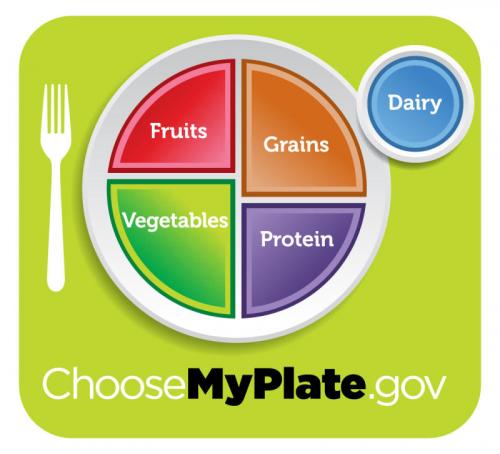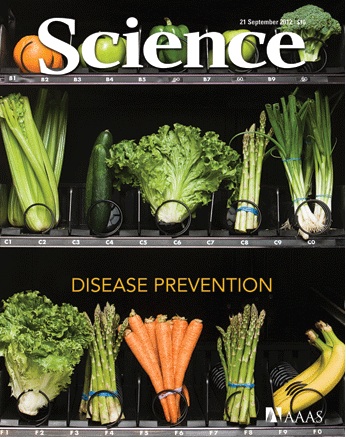By Robert Verkerk PhD, scientific director, ANH International and ANH-USA
Is the medical mainstream finally going to take disease prevention seriously? Can we expect to see big changes in the coming years in terms of how our primary healthcare providers deliver their services?
Science journal – a ray of light?
The fact that an entire special issue of one of the world’s leading multi-disciplinary scientific journals, Science, is devoted to the subject of disease prevention is a nod in the right direction, for sure. Those with the patience to work their way through the introductory piece, 7 news items, one review and 5 perspective pieces, will undoubtedly have found some gems. Some of these, if widely implemented by healthcare providers and the public alike, could help sway the course of the ‘super-tanker’ of mainstream medicine that has ploughed along in the same general direction for several decades now. Particularly when it comes to chronic diseases that are now by far the biggest burden on healthcare systems, mainstream medicine has primarily engaged with treating symptoms of disease — rather than attempting to prevent diseases occurring in the first place.
While many of the pieces in the special issue emphasise the need for more research, and especially more clinical trials to verify what works and what doesn’t, it was a relief to find the contributors often recognising that diverse diets and healthy lifestyles were at the heart (excuse the pun) of the issue. On the flip side though, crucial detail was generally absent.
Caroline Ash and colleagues, authors of the introductory piece It Takes More Than an Apple a Day, refreshingly point to the importance of early ‘programming’ of healthy diets and behaviours, stating:
"And even as medical researchers seek new prevention drugs and strategies, we are reminded that lifelong health requires proper nutrition, especially during the first 1000 days of life, and that effective prevention will require an understanding of why people engage in health-harming behaviors."

Efforts to help kids make the right food choices provide untold future benefits
Progression or sea change; what’s really needed?
Managing the chronic disease burden is going to become unsustainable in a matter of a decade or two. It’s ironic that babyboomers who consume the healthiest diets and lead the healthiest lifestyles are the ones who are currently most under attack by pro-medical establishment ‘neophobes’. These people appear to believe you’re better off popping drugs when you when you get sick, rather than working your darndest to avoid getting sick in the first place using what goods nature has to offer.
A slow transition to a healthcare system that pays a little more attention to disease prevention is one that is, in our book, bound to failure. Without a sea change in education and training in medicine — and in public expectations of what healthcare is all about — we are likely to continue to get more of the same. From the medical profession’s perspective, things will really start to move forward once medics come to terms with the fact that food is a more powerful and valuable health-modifying agent than anything that comes out of a prescription bottle or out of the end of a needle. From the public’s perspective, refusing to accept the pill-for-an-ill approach offered by most primary healthcare providers is a pretty good start. As is asking for a comprehensive health check for the still-healthy (see our Call to Action).
At ANH-Intl, we have been long standing proponents of the need for a kind of bottom-up revolution, where change is forced because of demand and pressure from the public. This is largely because there is so much evidence of distortion and manipulation at the upper levels of decision-making in most walks of life — and especially in medicine — where governments and corporations are the ones most in control of ‘the agenda’. And they do this most often without our interest being uppermost in their minds.
Standard protocol for lifestyle reform: is it enough?
Contained within the one review paper in the Science issue on disease prevention, entitled Can Noncommunicable Diseases Be Prevented? Lessons from Studies of Populations and Individuals, penned by epidemiologists Majid Ezzati and Elio Riboli of Imperial College London, are a few things that have been demonstrated on a large scale to help prevent chronic diseases. These are:
- Eliminate or substantially reduce tobacco smoking
- Eliminate or substantially reduce harmful alcohol use
- Reduce dietary salt intake to low levels
- Eliminate manufactured trans fats
- Increase fruits and vegetables in the diet
- Replace saturated fats with poly-unsaturated fats
- Replace processed carbohydrates with whole grains
- Reduce overweight and obesity
- Increase Physical activity
- Provide clean fuels for cooking and heating
- Eliminate or substantially reduce infections that are risk factors for, or predispose to, cancers and cardiovascular diseases
- Screen for and treat risk factors for non-communicable diseases (NCDs) in primary care
As always, the devil is in the detail. And a big problem for our society is that there isn’t always general agreement on how to deal with each of these issues. This is especially true for the kinds of changes that are required in fruit and vegetable consumption, the relative relationship of macronutrient intakes, including high quality proteins, to complex carbohydrates and healthy fats, the most appropriate mechanisms for weight loss for different individuals and the types, as well as the most appropriate frequency and duration of physical activity — again for different individuals.

Sulphur-containing compounds in kale (e.g. sulforaphane) have cancer preventing properties
We don’t have space here to dissect these issues further, but suffice to say, there are plenty of practitioners that are getting dramatic and very positive results using approaches to the above that are substantially different from typical government or mainstream medicine recommendations.
And herein lies a profound problem: medical guidelines are based on the results of research by epidemiologists like Drs Ezzati and Riboli who are looking at population-wide influences. Here, we lose the most scientifically interesting information — the best case scenarios being massively diluted by the sheer bulk of numbers. Guidelines are also heavily influenced by the results of research using randomised clinical trials (RCTs). These trials are widely recognised as the gold standard for evaluating the effects of a one or a limited number of interventions. But by their nature, they don’t tell us a lot about what happens in the real world, especially when multiple strategies are employed together in a progressive clinical environment in which the individuals whole body and his or her environment is taken fully into account. And clinical experience, presently still the poor cousin of RCT-based medicine, points strongly towards these multi-factorial strategies as the best way forward for preventing and managing chronic diseases.
A pill a day and more screening?
It’s interesting that the Science special carries two pieces on aspirin. Like so many drugs, the 110-year-old drug is a purified form of a key active within a natural product, in this case willow bark. And is there any relationship between the new-found interest in old drugs like aspirin as the pharmaceutical industry this year hits the toughest part of the patent cliff? Could it also be related to the recent finding that the risk of suffering serious internal bleeding from taking daily doses of aspirin appears to be at least on par with its limited role in as a heart disease preventative agent? Well, guess what? Aspirin’s role in cancer risk reduction is now a subject of much speculation, well illustrated by Jocelyn Kaiser’s report in Science entitled Will an Aspirin a Day Keep Cancer Away.
And should we all be lining up for more screening? On the surface it would seem a good idea to catch any disease as early as possible, even before it manifests clinically. But this issue of Science reminds us that over-screening for breast cancer can cause more problems than it resolves. Eliot Marshall, in his piece called Task Force's Prevention Advice Proves Hard to Swallow, describes the controversial decision of the U.S. Preventive Services Task Force to advise against routine mammograms for healthy over-40s back in 2009. The problem was revealed in the stats with a huge number of false negatives. Women getting routine mammograms were being made to fear for a disease that would not kill them — one in fact it turns out many of them didn’t even have. The screening programs led to a very high rate of biopsies, something that doctors and hospitals were reaping financial rewards for.
A similar problem has been demonstrated with prostate cancer, as clearly revealed in Peter Starr’s fascinating documentary, Surviving Prostate cancer without Drugs, Radiation or Surgery.
What’s conspicuously lacking from the discussion in the Science issue is the use of so-called emerging risk factors that help you identify functional changes in the body that appear decades before any physical or structural manifestation of chronic disease has occurred. This highlights a very real problem with emerging science. While the science is emerging – it’s not generally accepted. And we’ve learned many times, as exemplified by the cholesterol and statin debate, by the time it’s generally accepted, there’s a risk we’ll discover later that mainstream opinion was wrong.

Mammograms: routine screening risks outweight benefits for over-40s
Getting to grips with the causes of disease
The 64 million dollar question is how long will it take the medical mainstream to better understand the nature of disease? Take hypertension (high blood pressure) for example, widely seen as one of the primary precursors to heart disease, still the Western world’s number 1 killer. The medical mainstream understands that poor diets, insufficient physical activity, too much alcohol, smoking, or being of African-Caribbean descent, all increase your risk of hypertension. And while your primary healthcare provider might make cursory mention of dietary and lifestyle changes that could help you, or might even refer you to a dietitian, the main function of your most highly trained healthcare provider will be to prescribe drugs. Sticking with our example, these might include calcium channel blockers, ACE inhibitors, diuretics or beta-blockers.
Most disconcertingly, the typical medical training of doctors means that most won’t learn how about environmental influences, in combination with specific genetic constitutions, play a vital role both in the progression, as well as the prevention or recovery from specific chronic diseases.
Looking again at our hypertension example, few will recognise the condition for what it truly is, defined succinctly by cardiologist Mark Houston MD as “the ‘correct’ but chronic dysregulated response with an exaggerated outcome of the infinite insults to the blood vessel with the subsequent environmental- gene expression patterns in which the vascular system is the innocent bystander.”
Despite the infinite number of potential insults, there are just five ways in which our bodies can respond: inflammation, oxidative stress, auto-immune reactions, altered gene expression and endothelial ‘dysfunction’. And we (collectively) now know a lot about specific foods and nutrients that can influence these responses, both positively and negatively. Food can therefore be both a medicine - and a poison. Simply recommending 'more fruit and veg' is just not enough - and in some cases may even be counter productive to the end-game of disease prevention. Pushing for more physical activity is also generally a move in the right direction, but there is now so much known about how to combine strength and cardiovascular exercise and how to effectively implement stress transformation practices.
These principles are broadly applicable to all chronic diseases and actually provide the bedrock to the functional medicine approach. It is worth noting that there are a significant group of doctors, scientists, pharmaceutical industry bosses and government scientists that are wedded to the status quo. So we must also recognise that change will occur only if those who are blind to the science, as opposed to being healthy sceptics, are relegated to a small, ineffective minority. And that will take some doing.

Government 'healthy eating' guidelines are inadequate and sometimes misguided
The vital role of the public
Large swathes of the public are also unwittingly preventing the sea change that is so badly needed. Pills and syringes are still largely seen – both by the prescriber and the recipient – as the primary interventions that yield results, despite evidence to the contrary. By contrast, diet and lifestyle recommendations, being often fluffy, hard to enforce and, for many, even harder to comply with, are often seen as the side serving – that you can take or leave.
If we are to take disease prevention seriously, the practice and delivery of medicine needs — quite literally — to be turned on its head. And we, as members of the public, by altering our expectations of what we want from our healthcare services, can become a driving force for change.
I’ll end with a sobering reminder; by the time the medical profession labels us as patients, we’re too late. It’s evidence that we’ve failed in our efforts to prevent disease. So let's not fail - together, let's succeed.
Call to Action
- If you’re over 40 and are yet to exhibit any obvious symptom of heart disease, diabetes, cardiometabolic syndrome – or indeed any other chronic condition – visit your primary healthcare provider or family physician and ask for a detailed check-up. Because functional changes in our vascular system precede structural changes by decades, it’s critical that some evaluation of these functional changes is included in your check-up. This might for example include measuring your high-sensitivity C-Reactive protein (hs-CRP) level, along with your blood pressure, blood lipids (including HD/LDL cholesterol and triglycerides), glycated haemoglobin (HgA1C ) and homocysteine. If you’re told that this kind of evaluation is unnecessary, you know you’re sitting in front of a practitioner that doesn’t really value disease prevention. You may then be minded to change your doctor.
- Seek out healthcare providers that are able to offer you detailed evaluation of your current health status as well as meaningful advice about what dietary, lifestyle and stress transformation strategies can be employed to improve your health, wellbeing and vitality. A practitioner who appears to be managing his or her own health well is a good sign.
- Take responsibility for your own health, don’t hand that responsibility to someone else.
- Get as many others in your local community to do the same! If you’re reading this within 72 hours of this feature’s release on October 3, 2012, the chances are you are already doing many of the right things in terms of diet and lifestyle. But it’s no longer good enough to think only of ourselves. We need to do as much as we can to influence the people around us. That means members of our families, our friends, and those in our local community. Please raise these issues in discussion whenever it’s appropriate – and circulate this article as far and wide as you can, especially within your local community where you will have most influence.
ANH Europe Food4Health campaign








Comments
your voice counts
08 October 2012 at 1:35 pm
The work of Magda Havas and Sam Milham show the large effect dirty electricity is having common chronic conditions, such as hypertension, diabetes, MS, ADHD, and more.
It is produced by the small power supplies and flourescent bulbs and put back on the mains to induce blood oxidative stress and neurological symptoms in a third of the population.
Once sensitized, other devices such as cordless phones also cause symptoms.
Your voice counts
We welcome your comments and are very interested in your point of view, but we ask that you keep them relevant to the article, that they be civil and without commercial links. All comments are moderated prior to being published. We reserve the right to edit or not publish comments that we consider abusive or offensive.
There is extra content here from a third party provider. You will be unable to see this content unless you agree to allow Content Cookies. Cookie Preferences